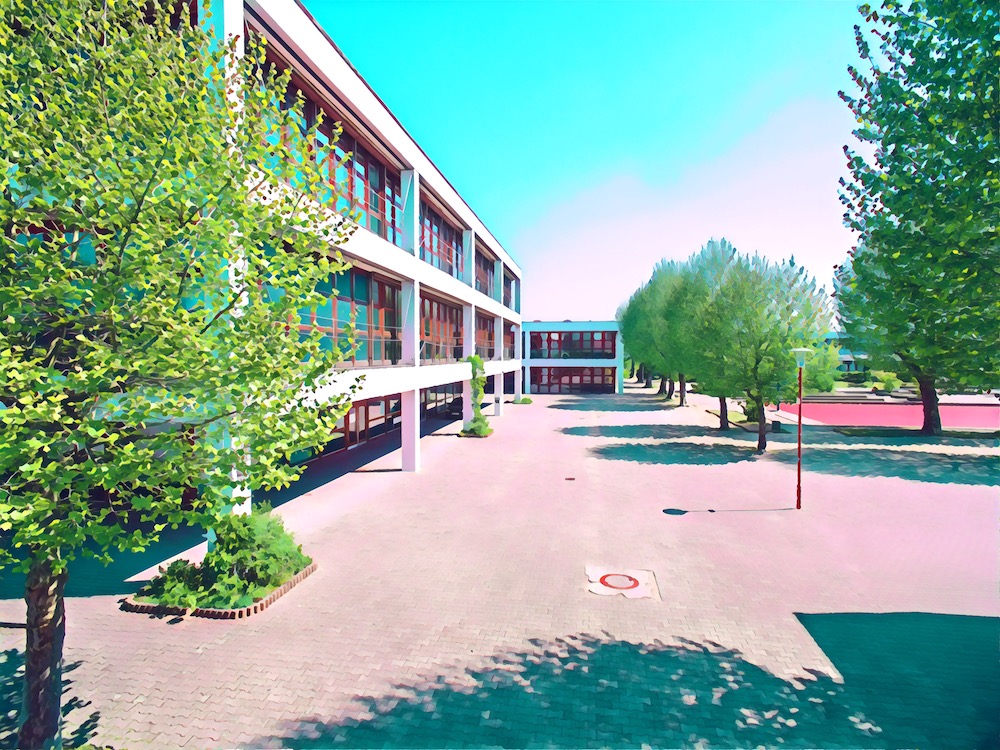The Importance of Challenges
The Importance and Challenges of Intercultural Communication – The LK English Abi25 trip to the Linden-Museum, Stuttgart Africa is a huge continent not far from us and is still misunderstood by many, although the history of Europe and that of the African continent are closely interwoven, right up to today’s discussion on migration. Yet we know almost nothing about the people and culture of this continent, except for what we think we know. But the way we think about Africa and what we think we know about Africa has nothing to do with reality. It is the product of so many prejudices and that of a „single story“ (Chimamanda Ngozi Adichie), and the intercultural communication that is so much talked about today was completely undesirable for centuries. Europeans came to Africa and felt superior in every way to the people who lived there. The Linden-Museum is an ethnological museum and our guide, who took us through the Africa section, explained the challenges and problems of displaying artefacts in a modern ethnological museum. The Linden-Museum has a collection of around 70,000 objects from Africa or mainly from the territories of former German colonies. The museum displays these objects with the intention of showing visitors the real Africa at eye level. We also had to admit our own ignorance. What we didn’t know about Africa: Africa is divided into 56 states with thousands of languages spoken across the continent. We also learned that many of today’s problems are the result of decisions made in the past. For example, the borders of today’s states were largely arbitrarily drawn by the former colonisers. They saw themselves as superior and the skills, craftsmanship, traditions and culture of the African people as primitive, so they decided to ‚teach‘ them differently. This ignorance and sense of superiority culminated in the exhibition of African people throughout Europe in so-called human zoos (including the Wilhelma in Stuttgart). Having understood the importance of the arrangement of artefacts, our guide began elaborating on the various items and their background story. While no one story fully captures an artefact’s history, our guide chose the most well-documented historical accounts to give us a deeper insight. For instance, we have looked at a drum-like artefact used to represent the voice of the kings in their respective kingdoms. Kingdoms in Africa were centred around the well-being of their community and kings were elected democratically, which by the standards of the 18th and 19th centuries was a revolution and resembled modern-day governments. These drums brought the community of a kingdom together to discuss issues needing solutions and approval by the whole kingdom. They structured their discussions similarly to modern-day parliaments. After the drums, we encountered a necklace worn by a Herero woman. Covered with blood, this jewellery acts as evidence of the historically recognized first genocide committed by the German colonial power. The Herero were pastoral people inhabiting Namibia and with rising colonial power, had to fear a loss of their natural resources (bpd.de, 2021). After the uprising, the German colonial power eradicated between 50-60% of the Herero and acknowledged only in 2021 their guilt. (bpd.de, 2021) We were confronted with our misunderstanding and lack of knowledge of Africa as a “black box” to which we attributed narratives that do not equal the truth. Neither of us knew that Africa is home to more than 2000 different languages and 54 countries. And neither were we informed about the involvement of Chinese investments flooding several African countries. The last artefact introduced to us was a customized motorcycle. The bright colours, handmade accessories, and a distinctive mirror at the front stood out immediately. These details tried covering up the Chinese brand of the motorcycle SanLi which flooded the domestic motorcycle market with cheap alternatives. Gaining back a share of the formerly domestic motorcycle, more African customers decided to add their spin to design to the foreign motorcycles. With messages in multiple languages, this motorcycle conveyed a new picture of globalism that is practically unheard of in the Western world. We are nowhere near to understanding Africa as a continent and the individual countries. Our narrative can be changed if we change the consumption of our information. A look at our current literature mandatory to read for the Abitur, proves the point once more of establishing powerful, yet wrong and incomplete stories of Africa and migration. Not even our supposedly representative literature can change our ideas. Is this what we can leave as a status quo? text: Yara Ismail, Simon Keller, Marc Maurer, Jonah Schreiber pictures: Angel Nastase





